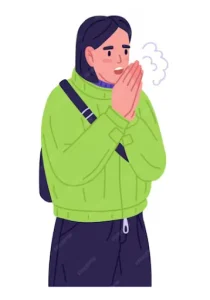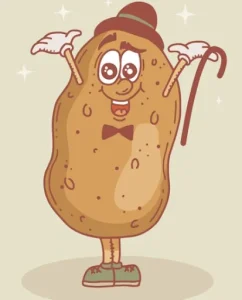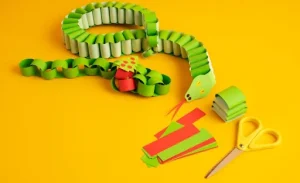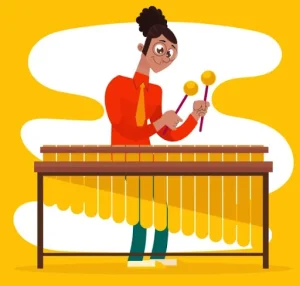Blow Hot, Blow Cold – Complete Guide to CBSE Class 5 EVS Chapter 15
Welcome to iPrep, your Learning Super App.
Our learning resources for the chapter “Blow Hot, Blow Cold!” for Class 5 EVS are designed to ensure you grasp this concept with clarity and perfection. Whether studying for an upcoming exam or strengthening your concepts, our engaging animated videos, practice questions, and notes offer the best-integrated learning with interesting explanations and examples.
Blow Hot, Blow Cold: The Magic of Air from Our Breath ️
A Story from the Forest: The Curious Mian Balishtiye
In a cold forest, a woodcutter was cutting wood. His fingers felt cold, so he blew on them to warm them up. Mian Balishtiye, a tiny imaginary creature, watched him with curiosity. After some time, the woodcutter made a fire to cook his lunch. The wood was damp. He blew on it to make it burn brighter. Mian couldn’t believe what he saw!
“Why is the woodcutter blowing to warm his hands and cool his hot potato?” he wondered. Let’s find out the secret behind this!
Why Do We Blow Hot, Blow Cold? ️
Our breath can feel both hot and cold, depending on how we blow:
- To Warm Things: When we blow slowly with our mouth close, the air feels warm. This is because our breath is warmer than the cold air around us.
- To Cool Things: When we blow hard and from a distance, the air from our breath cools the surface by spreading heat away.
Let’s Try It: Simple Experiments!
Experiment 1: Blow Hot, Blow Cold
- Blow gently on your hands.
- Now blow from a distance with your mouth wide open.

Question: Which felt warmer? Why?
Experiment 2: Cool a Hot Potato
- Take a warm potato or any hot food.
- Blow gently on it.
- What happens? Does the food cool down?

Fun Fact: Blowing helps cool hot food by moving the warm air away and replacing it with cooler air.
How We Use Our Breath in Everyday Life ️
- Cleaning Spectacles: People blow hot on their glasses to make them a little foggy. This helps in cleaning them.
- Cooling Tea or Soup: We blow on hot liquids to cool them before drinking.
- Playing Instruments: Flutes, whistles, and horns produce beautiful sounds when we blow into them.

A child playing the flute by blowing air.
Make Your Whistle!
Let’s create a fun paper whistle:
- Take a piece of paper (12 cm long and 6 cm wide).
- Fold it in half and make a small hole in the centre.
- Fold the edges upward to form a whistle shape.
- Blow into it and listen to the sound!
Challenge: Whose whistle is louder—yours or your friend’s?
What Happens When We Breathe In and Breathe Out?
When we breathe in:
- Air enters the lungs.
- The chest expands, making room for air.
When we breathe out:
- Air exits the lungs.
- The chest contracts.
Activity: Count your breaths for one minute. Then, jump 30 times and count again. Did your breathing rate change? Why?
Hot Air vs. Cold Air: Understanding the Flow
Hot air rises because it’s lighter, while cold air sinks because it’s heavier. You can observe this with the snake activity.
Make a Paper Snake!
- Cut a round paper into a spiral shape.
- Hang it near a candle or a cup of hot tea.
- Watch how the snake moves when the hot air rises.

Discover the Sounds Around Us
- Have you heard the sounds of a flute, dholak, or been?
- Can you recognize these sounds with your eyes closed?
Activity: Close your eyes while someone plays different instruments. Guess the sound and match it to the instrument.

A variety of musical instruments.
Fun Fact: Your Heartbeat is a Clock!
Ever heard a “dhak dhak” sound in your chest? That’s your heartbeat! Use a simple funnel and tube to listen to it. Place the funnel on your chest and the tube near your ear. Isn’t it amazing to hear your own heart?
What We’ve Learned: The Wonders of Blow Hot and Blow Cold
- Our breath changes temperature depending on how we blow.
- Hot air rises, while cold air sinks.
- Blowing helps us in many ways—cooling food, cleaning glasses, and making sounds.
Final Activity: Design Your Instrument!

Use household items to create a musical instrument. Here are some ideas:
- A straw flute: Cut holes in a straw and blow into it.
- A bottle whistle: Fill a glass bottle halfway with water and blow across its top.
Challenge: Play a tune with your instrument and share it with your friends!
To read the NCERT text of When the Earth Shook!, click here.
To read our notes for the previous chapter, When the Earth Shook!, click here.
Practice questions on Chapter 15 - Blow Hot, Blow Cold
Get your free Chapter 15 - Blow Hot, Blow Cold practice quiz of 20+ questions & detailed solutions
Practice Now








